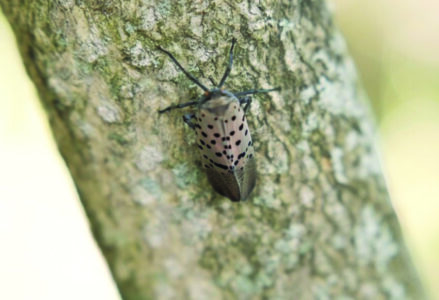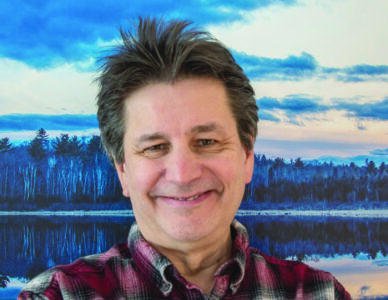Remembering a natural connection
Remembering a natural connection
“And everything looks worse in black and white.” — Paul Simon
Most any river has a voice and a soul and, like a person, has depth and warmth and cold, but also like people, there are some that seem more alive than others.
This river is most certainly one of those living places where visitors arrive as one person and leave another.
Her powers of metamorphosis and transposition are innate and undisputed by anyone who has felt their enchantment while ambling beside her.
One such soul was a traveler named Carlo Estupigan.
Like a lot of other folks, I heard about him first on the TV news, about how the Yellow Dog River had drawn him to her icy banks on a cold winter’s day to take pictures, and about how he was missing. And, after days of waiting that must have deeply agonized his family, he was all at once gone.
It was one of those frustrating circumstances where he was found only 300 feet from the road, not far from the parking lot at the trailhead where his car sat parked.
He was a city kid I never met, but I know now as a true compadre.
He had to have been tired and cold and scared with the blinding winter winds howling through that watercourse. Nature wrapped him in a blanket of snow and took him home.
I wish I had met him, perhaps along a trail somewhere, maybe even the muddy trail that hugs the banks and rises along the Yellow Dog. I wish we had spoken or fished, taken pictures, played guitars or watched birds together.
But knowing me, if we had met out there somewhere, I probably would have said only, “Hello” and kept walking, not wanting to intrude on the solace and introspection of another — especially in the cathedral of god.
I imagine him as someone who would have shared the same temperament.
I wish I could have been there to help him.
In the wake of his passing, I was introduced to him in an unlikely fashion for me.
I looked up his Instagram posts — kind of an internet photo diary.
The pictures and messages there confronted me with something profound, something unexpected and humbling. Even though I was more than twice his age, I found someone who understood me, and who I understood immediately.
We could have been great friends. It made me affirm the generation gap is indeed a cruel mirage that damages any of us susceptible to its disease.
I considered that revelation a heartening gift.
Carlo was someone who shared my interests, had visited and photographed many of the same places I had, and had encountered and befriended some of the same wise and beautiful denizens of these northern forests, lakes and streams.
He titled his Instagram collection “Bird photographs and other random bits of life that happen between the shutter clicks.”
The photos there from his Canon camera were marvelous moments, colors, feelings, textures and heart. With my photographer’s eye, I felt like I was staring right through his viewfinder.
There were black-throated green and black-and-white warblers, handsome brown, rainbow and brook trout in an angler’s net, portraits of a tabby house cat named Leon, foxes and squirrels and things he’d found.
There were also pictures of his dad fishing, other family members, bands and records he loved, guitars he played, food he ate, sunrises and sunsets over frigid waters with floating ice, waterfalls, phases of the moon and images of himself as a kid.
He had also shot the aurora borealis, a mourning cloak, a spill on a carpet and random wall art he found meaning in and a poster from the Clint Eastwood western, “The Good, the Bad and the Ugly.” He said the film was “definitely up there” with his all-time favorites.
His dated writings and photos marked the first steelhead he ever caught in July 2016, a Lake Superior sunset photo from September commenting that it was finally nice to have a day to spend out with his camera again, and a picture of a brook trout saying, “Crazy how each one looks so different.”
There was a video post shot through the windshield of his car, showing him driving south down M-24, singing.
On Jan. 6, 2018 he wrote, “It was on this day two years ago I saw my first wild owls. This is one of the first shots I ever took of wild owls. Back when I was very new to birdwatching and shooting…”
His portfolio featured several shots of barred, snowy and great-horned owls and a drawing he liked of a great gray owl from an old Peterson field guide.
On Aug. 7, 2018, he commented on a picture of a moth he’d taken saying, “Cool looking moth hanging out by the door. If you turn your phone upside down it looks like there’s a smiley face on its back. Nature is weird.”
His final post was from January 21, three days before he went missing south of Big Bay. The photo showed the “Super Blood Wolf Moon overlooking a snowy night in Marquette, Michigan.”
He wrote, “Seeing this reminded me of the song, “Under a Killing Moon” by my favorite band ever, @thrice!”
This brings me back to the river.
The photos Carlo posted July 8 and 17, 2018 showed the Yellow Dog River and the river’s waterfalls situated not all that far down the trail from the road.
The same week he photographed the falls, I wrote a column in this space about the Yellow Dog River.
Here is some of what I wrote:
If you stop your car on this old steel-railed bridge and look out the driver’s side window downstream, you don’t see much. The leafy branches from the trees overhanging the river block out most of the view.
A look out the passenger side window doesn’t give you much more to see, except maybe a little better glimpse of the water pooled and swirling beneath the trees.
But if you roll down the windows and turn off the noise of the engine, the rushing sounds of this magical river, cascading over boulders and logs, invites you to follow her.
Down under those hanging green branches, where she glides and dips, rattles shallow through the riffles and then flows smooth, deep and slow, she beckons.
With a million tales to tell of days and months and years gone by, times of flooding and drought, of giant trees and sand banks fallen, of fires and frosts, she listens as well as speaks.
She knew the Anishinaabe and watched generations of children grow up, grow old and pass away along her gravelly banks. She’s seen the seasons of wildflowers come and go thousands of times, and still she remains.
Over the span of countless years, she’s befriended all the forest birds, plants and animals and she offers them drinks. She’s seen the times before America, before Caesar and Cleopatra.
She’s mirrored the faces of countless fishermen who peeked through the alders to see her, to cast a line toward the shiny and colored trout darting back in forth within her cold, deep waters.
No doubt she’s caught the falling tears of more than a few anguished souls, and while doing so, she’s whispered soothing words of comfort and truth, covering the sounds of sobbing with her healing voice, releasing the thorny tangles of minds and hearts.
Those who may trudge slowly to her banks with heavy burdens often leave with lighter steps, up over the muddy path they walk, alone and brave, through the woods to a bright and sunny opening in the trees.
I was asked a rhetorical question recently about whether I ever wondered if something was too good to be true and if I had been afraid to shake it off or let it go because it was the closest thing to “real” I’ve ever had?
I am now asking myself a question: whether it’s understandable to feel a great loss for, or don’t expect to ever forget, someone I have never met?
Look in the trees, the blue and orange skies of sundown, the eyes of the winter birds outside your window, the brown summer grasses nodding with the breeze, or among a mist of lightning bugs glowing in a dance over the river, inside your heart and even within the arms of a winter storm.
Carlo lives.
Vaya con dios, mi amigo.
EDITOR’S NOTE: John Pepin is the deputy public information officer for the Michigan Department of Natural Resources. Outdoors North is a weekly column produced by the Michigan Department of Natural Resources on a wide range of topics important to those who enjoy and appreciate Michigan’s world-class natural resources of the Upper Peninsula. Send correspondence to pepinj@michigan.gov or 1990 U.S. 41 South, Marquette, MI 49855.




